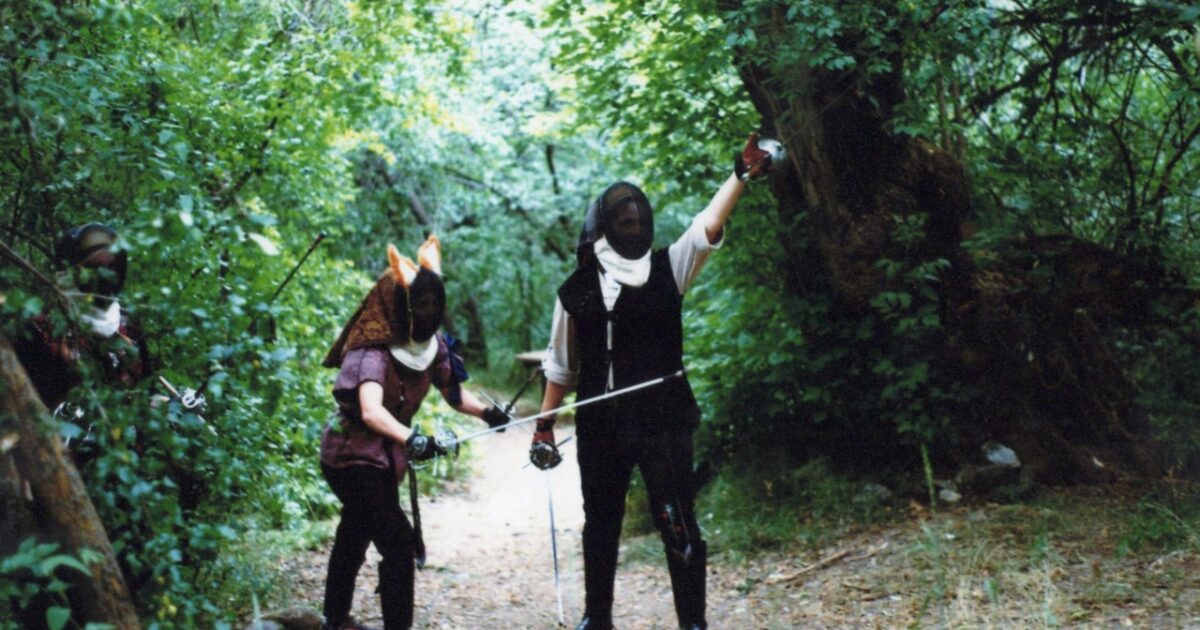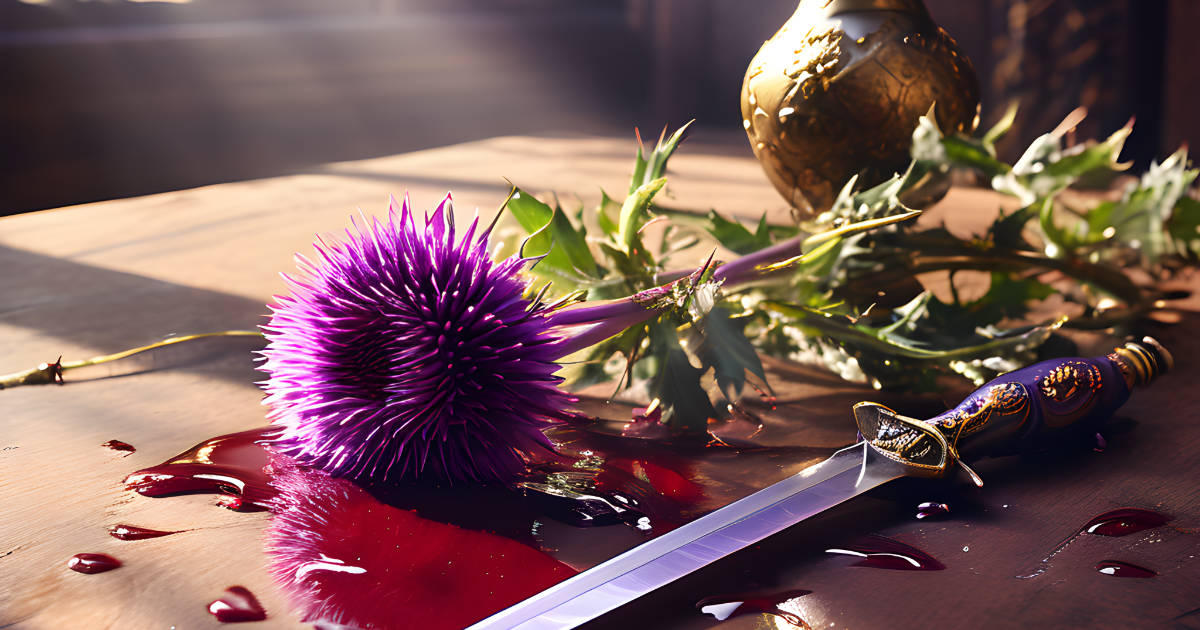Practice in a Nutshell
Type of Practice: Open
Students, you will have Open Workshop time to work on the lessons you have learned in the last two weeks. There have been several melee lessons in there, so if you would like to run melees to practice, you are welcome to do so. It would also be a good idea for Initiates to really focus on the Range and Placement lesson you had last week.
Swordsmen, we will have the opportunity to learn from one of the Master Swordsmen. If you have any requests for classes you would like to receive from them please let Shay or the Master Swordsmen know.
After the first hour our Lieutenants will lead us in activity time. There will be a few melees from the melee board, and perhaps a few other fun activities.
Lessons
- Newcomers: As Needed
- Initiates: Open Workshop
- Novices: Open Workshop
- Swordsmen: Formal Time with Master Swordsmen
Announcements
Tabards
Hey, it is a Tabard night this Friday, bring them if you have them.
Masters School
This Saturday the 17th is Masters School. We will start at 9 AM and go to 11AM. And everyone is welcome. Even latecomers. This is a fantastic time to try things, learn, and get in tons of fencing. Come and try it if you haven’t yet. It’s super fun, and I promise it’s worth getting up for.
Shay’s Thoughts
Ok, I have had a wonderful brain wave on hard shots. We focus a bunch on not throwing hard shots, I know, but it’s one of the things that makes us a fun and safe Company to fence with. It still happens on occasion, and that is normal. Inevitable really, this is a combat sport. So far most people have been really cool about it. Thanks for your awesome Attitude! But I still want us all to throw better shots. Really finesse the skill ya know? We can all get better at this. (Sorry for the hard shots I threw in the melee!)
So I have been pondering the root causes of a hard shot. So far this is what I have, hard shots come from one of three places: rolling your shoulder into the shot, over, under, or angled all apply, a misunderstanding/miscalculation of Range and Placement, and a moving shot, either you’re moving, your opponent is moving, or you both are.
Rolling your Shots
The Problem: Rolling or Winding up a shot is when you bunch up your shoulder to aid you in throwing your shot. Sometimes this is because fencers haven’t built up the muscle strength to carry the sword and strike properly, or maybe a fencer has been fighting all night and they are tired. I find it is very common for this hard shot to also happen in adrenalin-filled situations. ie. intense melees, or when facing off against an opponent perceived as superior.
The Opportunity: Remember this is a game of high-speed tag. We aren’t really trying to impale people. Relax your shoulders down and back, lightly contract the shoulder blades, but don’t tense up, and strike using your bicep. Think of the shot originating in and moving through your bicep as you extend your arm. Allowing your back to hold the weight of the sword makes it easier for new and tired fencers. Keeping your shoulders mostly disengaged from the strike, not only takes the force out of your shot but makes your move faster. It is a strike, not a jab.
Range and Placement
The Problem: Range is knowing how far away you are, and can still properly strike your opponent. This incorporates how you’re standing, how long your personal reach is, and the length of your sword. Mainly the problem here is we need to practice this more, and intentionally in every range and placement.
The Opportunity: Well your arm isn’t going to change lengths, at least so we hope. Sword length depends on what you’re using. I recommend getting a personal blade as soon as you reasonably can. Fencers markedly improve when they own their own sword for two reasons: it’s an inspiring investment and the consistency from week to week in length and weight. If you can’t get your own personal sword yet, try to use the same loaner sword week after week. If you’re into practicing with different grips, ie. extended grips or pommel grips you’ll need to take into account the extra 2-4 inches you’re giving yourself and mind that you’re not throwing a hard shot because of that.
Now to how you’re standing. There is a big difference in your range when you’re standing forward shoulder/side shoulder and boxer stance. And an even bigger difference when you stand in refused. For me personally, I can lose up to roughly 18-24 inches in my reach between side shoulder and refused. That is one heck of a difference! Practicing in each stance in a low adrenaline environment will build muscle memory and improve perception.
Moving Shots
The Problem: It’s a challenge to strike a moving target, even harder to do it when you’re moving too. And if we were just trying to hit it then we would probably be fine, but we are trying to hit it only so hard. Placement changes rapidly in fencing. That is part of what makes it fun! But if we miscalculate the distance to target in any given second, the shots land very hard indeed.
The Opportunity: Primarily we need to remember that the term Fencing comes from the original name of the martial art, The Arte of Defense. To play the game as intended, and not throw hard shots, we need to think of it as defending first. Even if that defense is in an offensive maneuver. To quote our manual “When you’re maneuvering into range, do it safely. The safest way to do this is by gaining dominance and addressing your opponent’s blade. That means pushing your opponent’s sword out of the way while you move in closer. Never move into range without first making sure that your opponent can not stab you. Put your sword between you and your opponent’s sword and push it out of the way with the true edge. Then make sure you move in quickly for the kill. If you miss, get back out of Range.” I would add or your off-hand. If you’re defending first, that automatically takes some of the hard out of your shot.
However, that still doesn’t account for all of your movement. I am specifically thinking of lunges or semi-lunges, and flow-through, or swoop steps. Here is where I think many of our hard shots come from. So how do we take the hard out of those steps? I believe the first step is to get in touch with our size and weight. That’s not a fat joke. We have fencers well over 6 feet tall that are close to 20 stone, and fencers who barely hail over 5 feet bottoming out 8-9 stone. For a more meaningful measurement that is a difference of 150 pounds. If you’re a taller, heavier fencer (still not a fat joke) your swoop step has a heavier centripetal force effect. What the crap is that? In plain terms did you ever tie a bucket of water on a rope and swing it around? All the water stayed in because of it. How does that apply to fencing? A larger weight requires more force to move around that center point, AKA that fencer’s stationary hip. And all that force ends up in the strike as you lunge, flow, or swoop. If you’re bigger, you hit harder, and it might not be because you’re throwing a hard shot, it might just be the weight behind your shot. So if you can be in touch with that, and reign that in a bit you’ll strike more softly. Separate the move and the strike, think back on your Multiple Attacks and Rush Attacks lessons. Pair that with remembering that fencing is really Defensing and you should be fine.
Now that doesn’t mean that smaller, lighter fencers can ignore that centripetal force, you can come whipping around faster than a heavier fencer and a hard shot can result as well. Mind your speed and still gauge that shot. Use a well reasoned and measured approach.
Ok that is a long article and there is a lot to think about in it. I hope it gives you something to practice, and that we can all throw safer shots. Love you all!


I believe that hard shots come from a lot of different places, but the one that comes to my mind is where our thinking stops. We’re constantly thinking about the fight, what’s our opponent is planning, what we’re going to do, etc… but when it comes to hard shots, how often is it because we thought about throwing the shot, but NOT what happens after.
Just because a shot has been thrown, that doesn’t give us permission to stop thinking about it. Our mind needs to follow through just as much as our body does. If we can think through the entire shot and stay controlled, I believe that we’ll be guaging our shots more than breaking them and we’lll be mentally present to recognize whenever we do throw a hard shot. Refocus. Reguage. Try again.